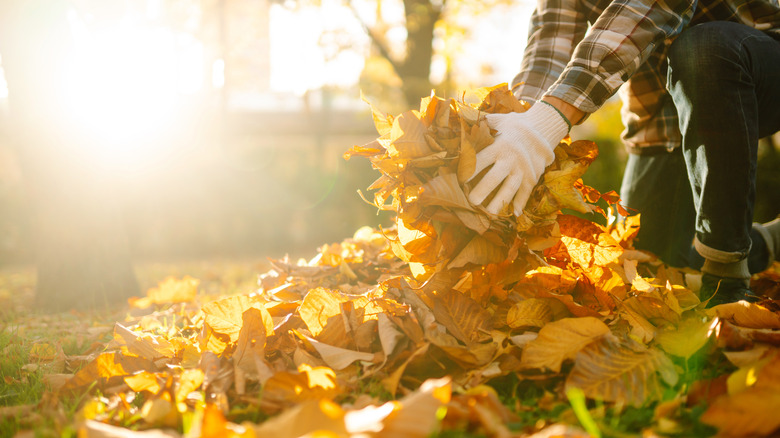Leave The Leaves If You Like Hummingbirds
When cooler weather arrives and the leaves start to pile up, your first instinct might be to grab a rake or fire up the leaf blower. But if you're a fan of hummingbirds and other wildlife, you might want to think twice before clearing out every fallen leaf. Layers of foliage are an essential part of a thriving backyard ecosystem. Leaving the leaves is a surefire way to attract hummingbirds to your yard.
Hummingbirds are famous for their love of nectar, often seen hovering gracefully in hummingbird gardens or sipping from colorful, tubular flowers. But surprisingly, nearly 80% of their diet consists of spiders and insects. These tiny birds rely on mosquitoes, small spiders, daddy longlegs, mites, and even insect eggs to get the protein, vitamins, and oils that nectar alone can't provide.
If you want to attract more hummingbirds to your yard, the secret isn't doing more — it's doing less. By letting all those fallen leaves stay in your backyard, you create an ideal habitat for the small critters that hummingbirds love to snack on. This simple step not only supports hummingbirds but also benefits other vital species like pollinators, helping them survive the winter. Less yard work for you, more food for the birds: it's a win-win!
Tips you need to know to leave the leaves for hummingbirds and other wildlife
If you usually rake fall leaves from your yard, here's what you need to know to "leave the leaves" and make your yard a hummingbird haven. First, you might wonder how much foliage to leave behind. Experts recommend leaving around 3 to 5 inches of leaves. Spread the leaves around your yard like mulch — avoiding smothering plants directly by piling the leaves on open soil instead. This helps retain moisture in the soil and suppress weeds. To keep pathways safe, you can still clear leaves from driveways and walkways. A simple rake is all you need to spread them around where they're most beneficial and remove them from where they're not wanted.
Leaves are especially helpful under trees, where insects, birds, and mammals love to take shelter during winter. In addition to leaves, tree holes and logs provide excellent overwintering spots for insects, making these areas perfect for creating a welcoming environment for wildlife.
If you're concerned about the wind blowing your leaves away, you can help weigh them down with water. While rain and humidity will naturally do this over time, you can speed up the process by lightly watering the leaf layer with a hose to keep it in place. The layer of leaves also works like a sponge that soaks and traps water, which keeps your plants and soil hydrated. By leaving the leaves, you'll not only save yourself time and effort, but also create a thriving ecosystem for plants, hummingbirds, and other wildlife to enjoy year-round.

